Indonesian food is very badly known by foreign visitors. Restaurants catering to them usually offer only nasi goreng (fried rice), mie goreng (fried noodles), cap cay (Chinese-inspired stir-fried vegetables) and gado-gado (compressed rice cake and vegetables with peanut sauce).
By consequence, most visitors only know about those dishes. Hence when they enter a restaurant they order what they know, ie : nasi goreng ! After receiving the same order over and over restaurants owners are convinced that bule (western foreigners, by extension foreigners in general) only like those 3 dishes. So they put them in the menu and the cycle goes on and on…
But the Indonesian cuisine is much more diverse than that. I will give some suggestions in this article.
I had to look for a few pictures online, the source is always mentionned when I have not taken the picture myself.
A few very common alternatives
If you want to eat like a local, you gonna eat rice. Virtually any dish is served with rice (which is almost always included in the price in a simple restaurant). I personally don’t really enjoy eating plain rice, but mixed with vegetables or sambal (spicy chili relish) it’s not a problem at all.
Fried chicken
Chicken (ayam) is usually pre-boiled with spices (including some turmeric, hence the yellow color of the pieces waiting to be fried) and then deep-fried on order (ayam goreng). A very common way to serve it is called ayam lalapan.
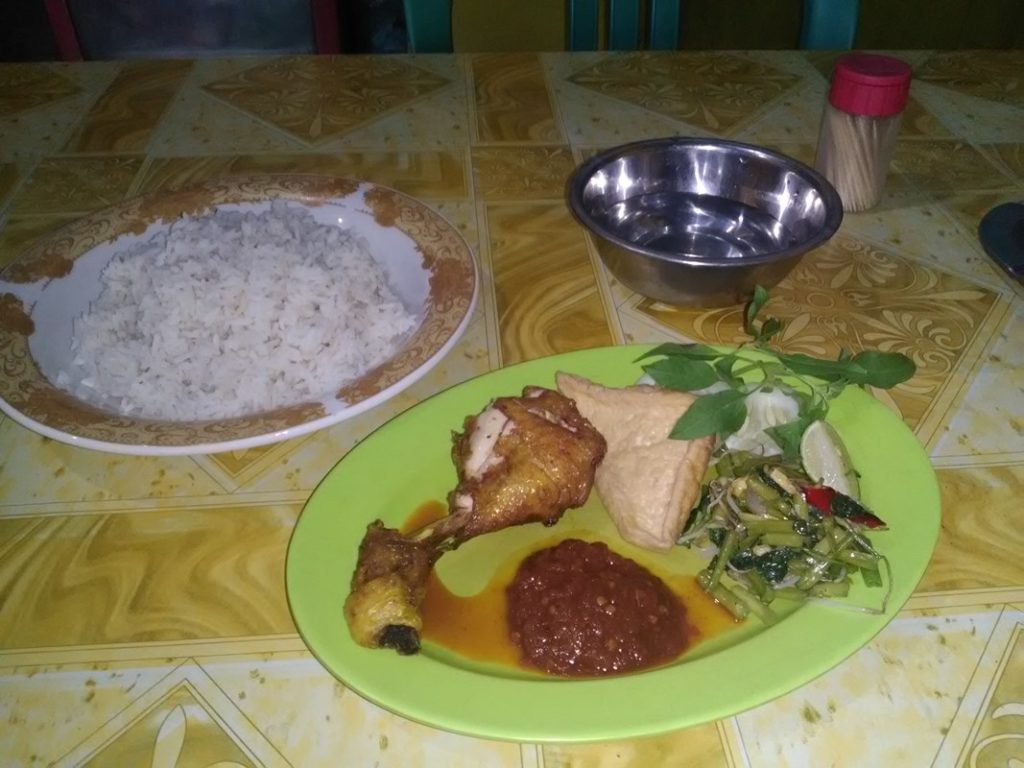
The lalapan refers to the few greens served on the side with a characteristic red sambal. Most people mix the green leaves (daun kemangi) with the sambal. So basicaly ayam lalapan is a piece of ayam goreng ‘fried chicken’ served with a few greens on the side and sambal ‘spicy chili relish’. Simple but efficient.
The amount of meat attached on a chicken drumstick is usually not very important. You may be asked whether you want the breast (dada) or the leg (paha).
Outside east and central Java (where pecel has kept its original meaning of a vegetables served with a peanut sauce), the dish pecel ayam is almost the same as an ayam lalapan. It also often comes in the form of pecel lele (lele being a catfish usually served fried).
A very similar dish is ayam penyet. The piece of chicken is covered with sambal and then crushed (penyet) with a mortar before serving. Chicken is often replace by fermented tofu (tempeh) in both dishes.

There are thousands of variations of ayam goreng ‘fried chicken’, depending on the spices used to pre-boil it or the sides served.
If the chicken is grilled on a barbeque, then it’s called ayam bakar.
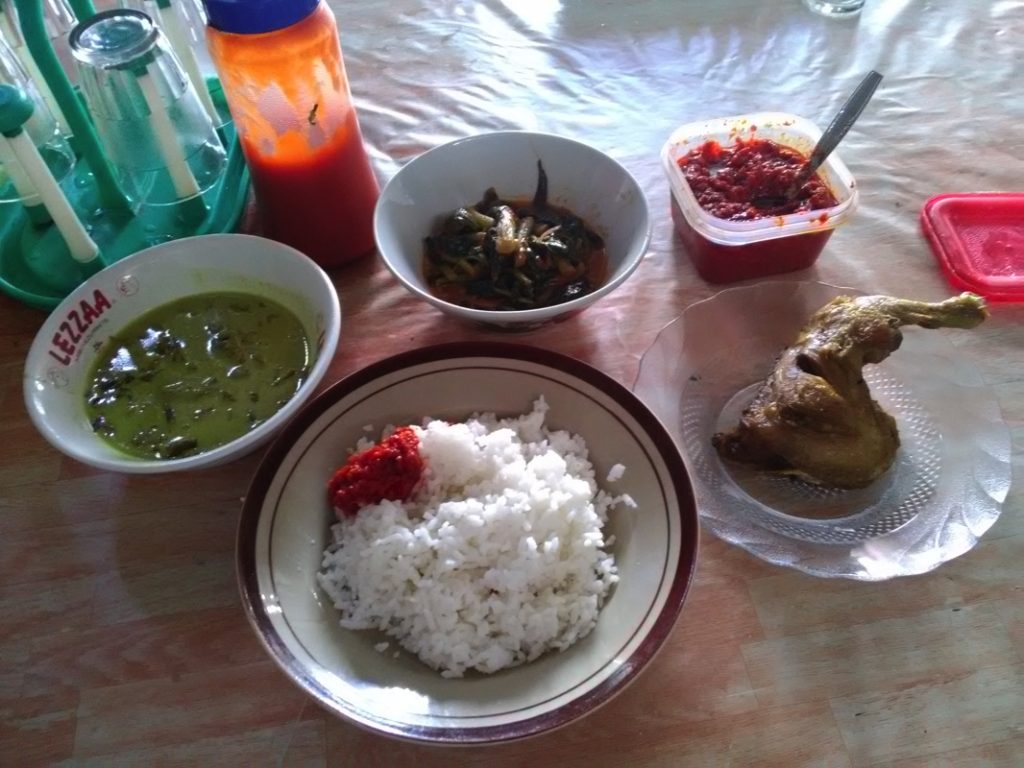
Ayam goreng with sides 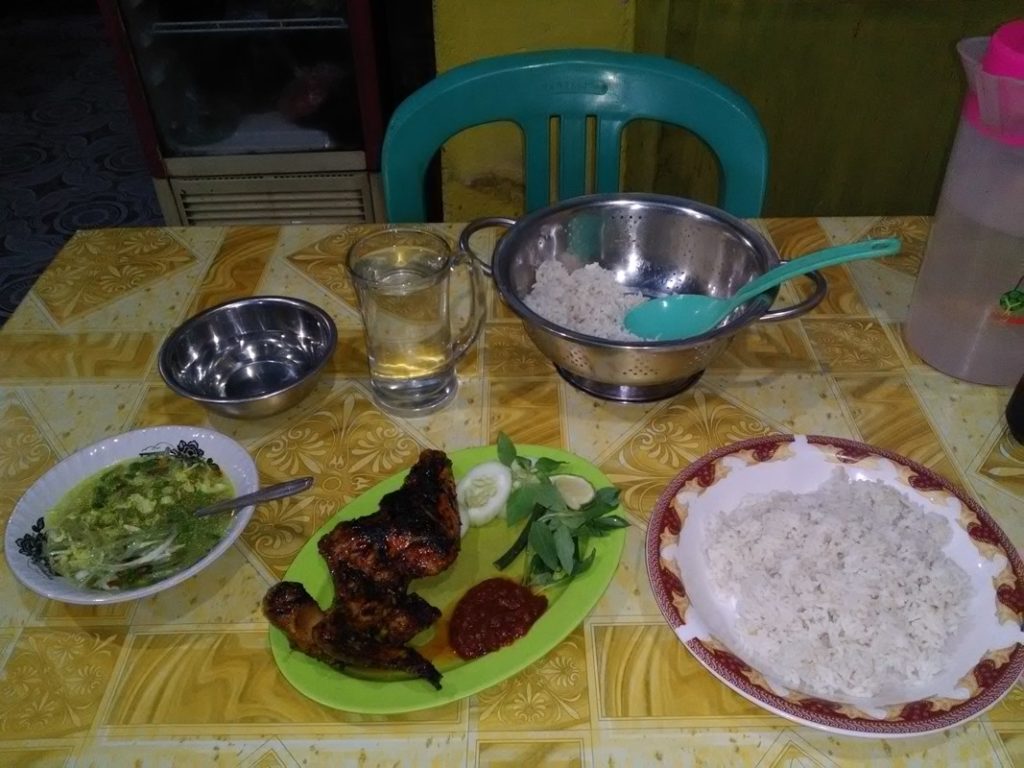
Ayam bakar with a simple soup
Vegetables
I don’t understand the ubiquity of cap cay in tourist restaurants. This is far from being the only option for eating vegetables.
A great way to taste many kind of food is to eat at a buffet-type restaurant (not necessarily a Padang restaurant). You either pick your food yourself (very common in restaurants catering to people stopping by while driving) or point at the things you want.
Nangka ‘jackfruit’ is something you will find very often. It is usually cooked in a kind of curry (Indonesian cuisine relies heavily on turmeric, ginger, galangal, lemongrass, candlenut, garlic, shallot and chili), in that case you can call it gulai nangka.
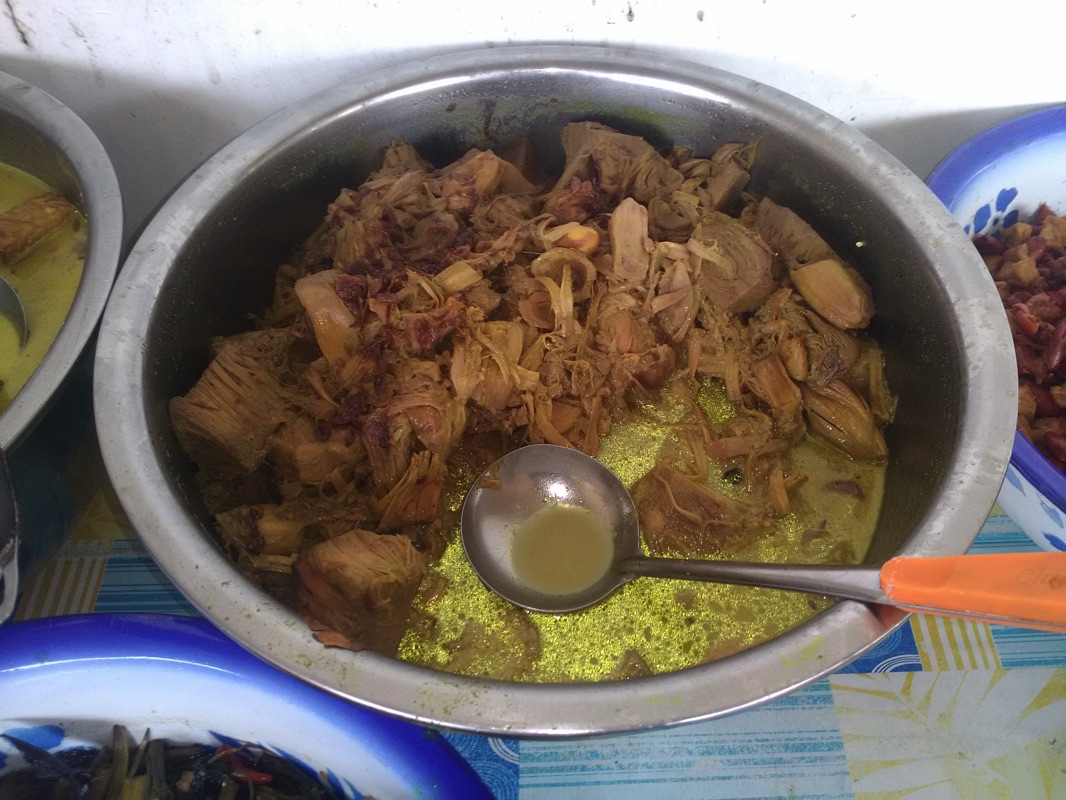
Another very common vegetable is kangkung ‘water spinach’. It is usually ordered as a side dish, different methods of cooking are available. Go for the simple one kangkung cah (‘water spinach with some cooking juice’), or kangkung terasi (‘water spinach cooked with fermented shrimp paste’).
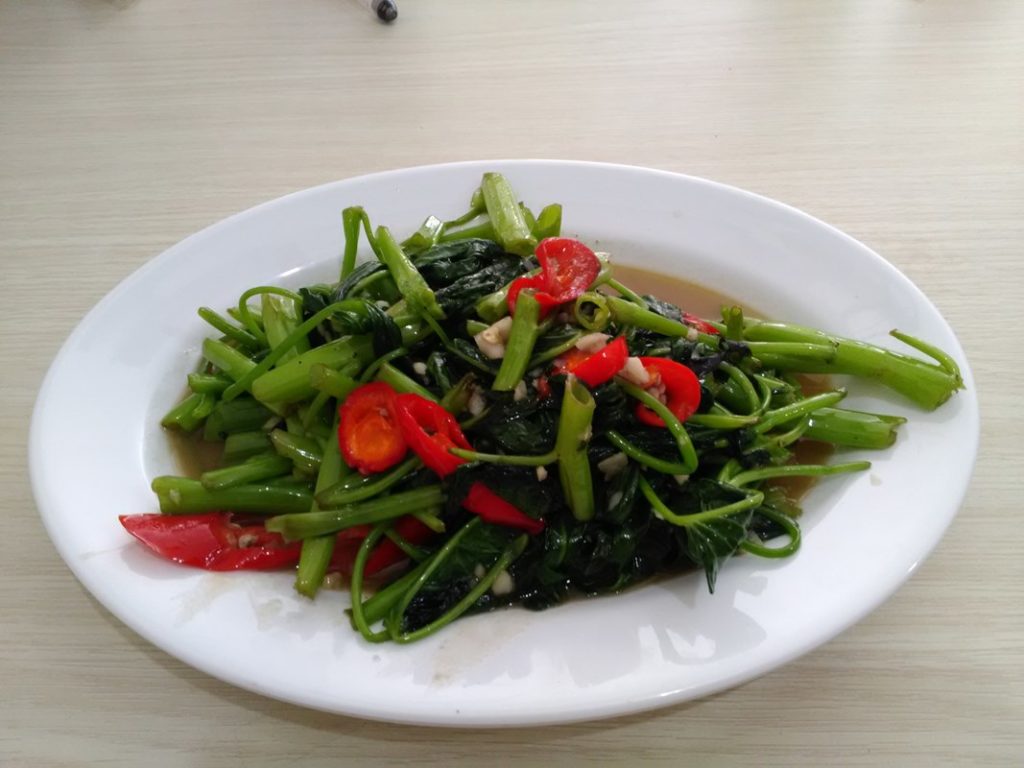
Terong ‘eggplants’ are also quite popular. They are often cooked in a spicy way inspired by the cooking method of West Sumatra, it’s then called terong balado (balado refers to a way of cooking an ingredient and serve it with spicy red sambal, eggs or shrimps are also commonly served balado for instance).
Indonesian have many ways to cook eggplant, for instance roughly mixed with spices and chillies in a mortar :
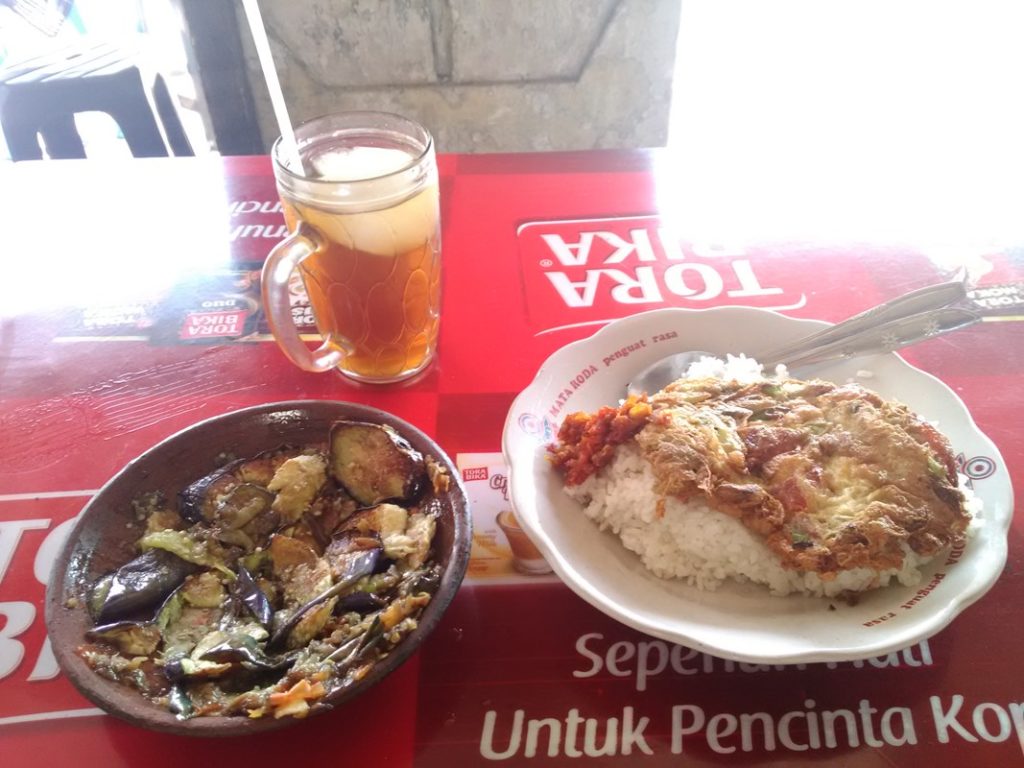
In a buffet, you can usually take as many kind of vegetables as you want, the price is the same. The meat or fish dish (lauk) you order is what defines the price.
For instance, in the plate below I had pare (bitter cucumber), kangkung (water spinach), buncis (beans) and telor asin (salted egg). In the back of the plate I also took usus ayam cabe hijau (chicken guts cooked with green chili) (on the right) and green sambal (on the left)
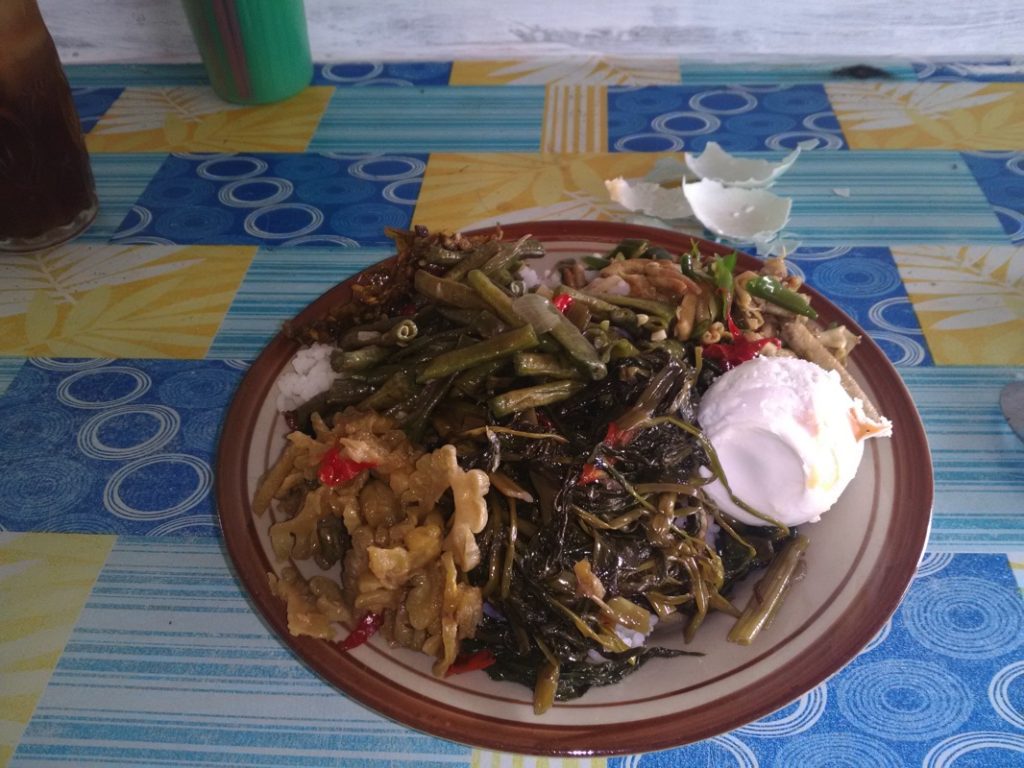
Other common sides
I love to add when available some perkedel (Dutch-inspired potato croquette) to my plate.
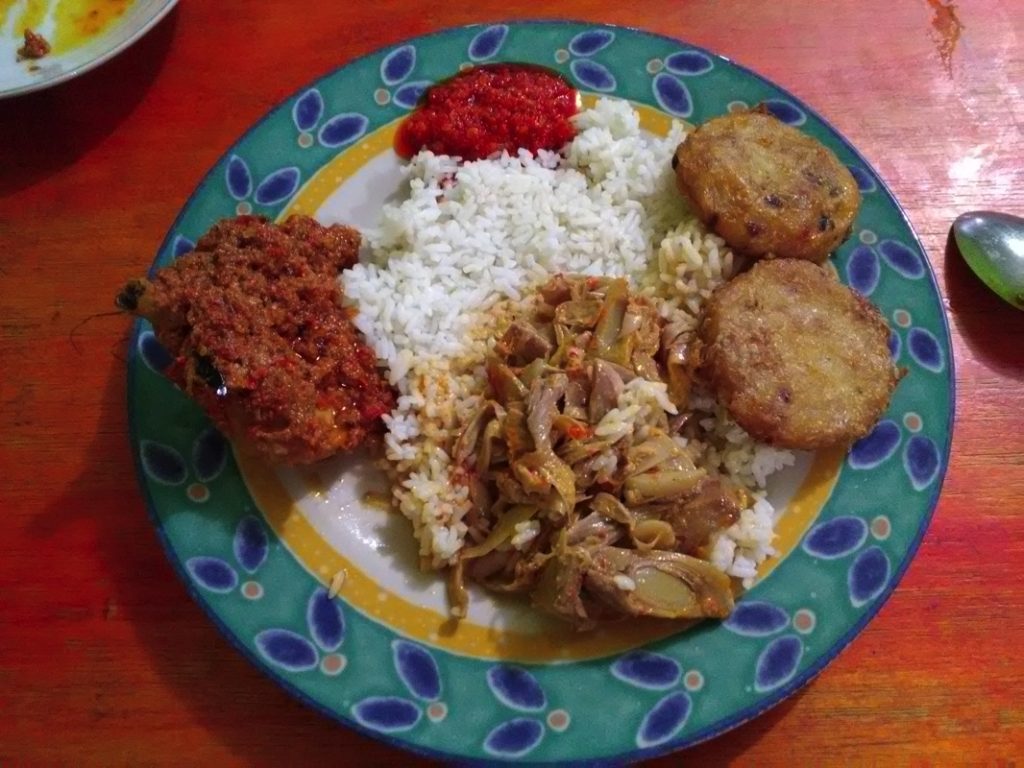
Eggs (telur) are almost always availables, either balado (served with spicy red sambal), either salted (telur asin) or as a deep-fried omelet (telur dadar).
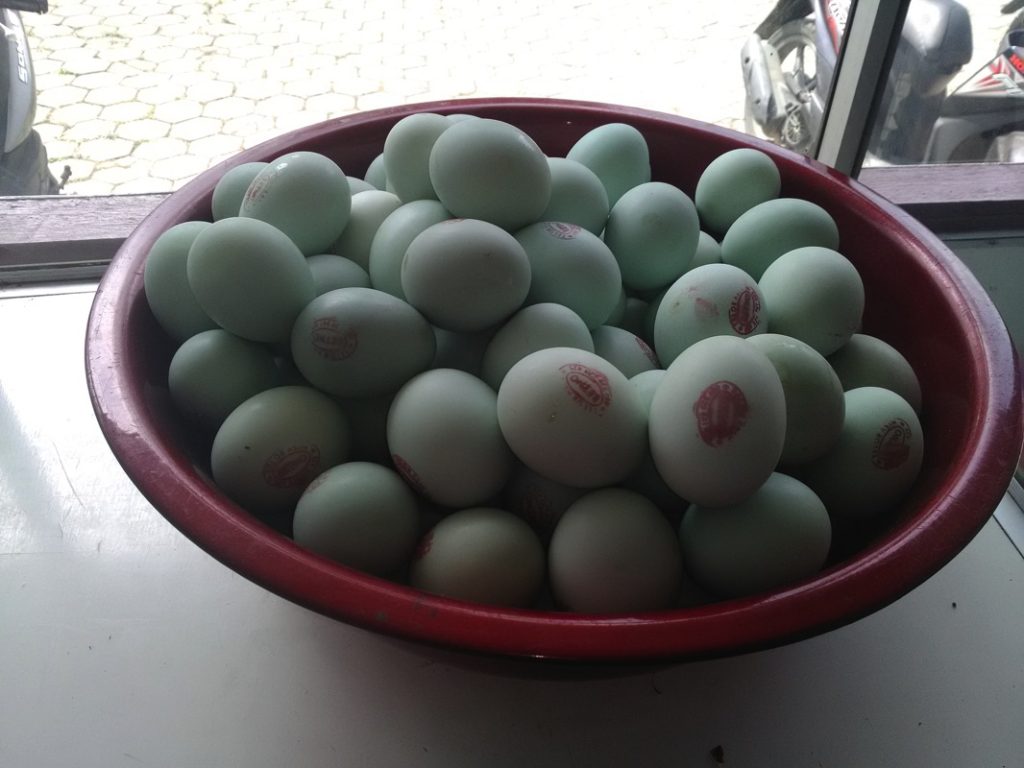
Telur asin 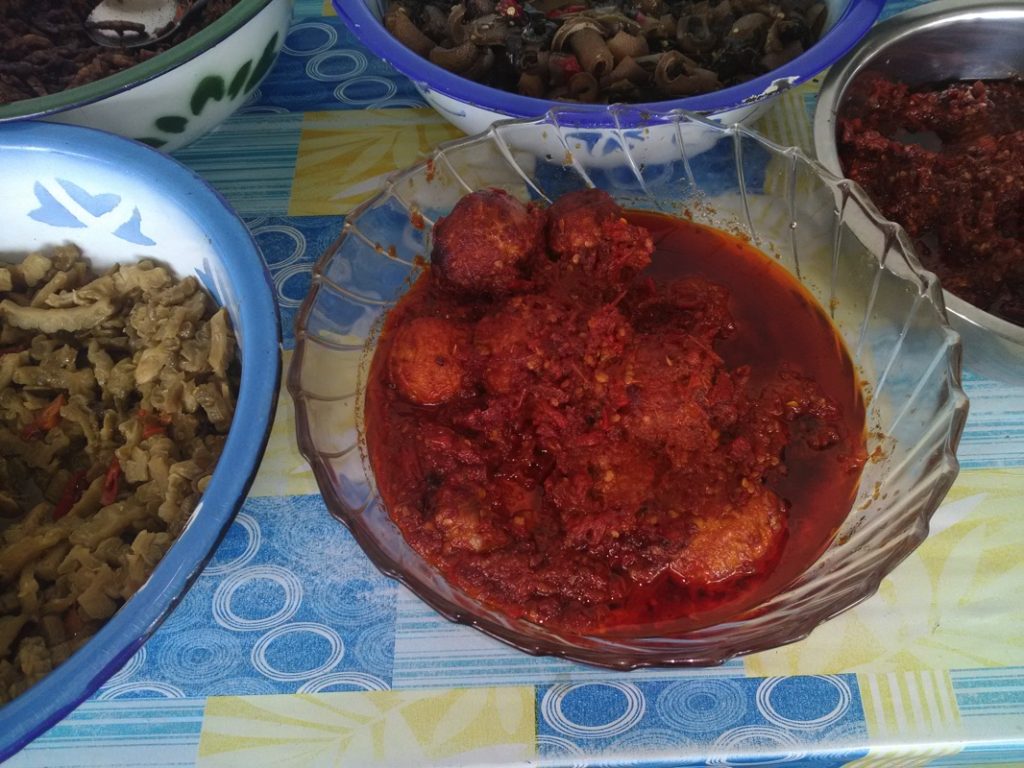
Telur balado
2 forms of tofu are also ubiquitous : tempeh and tahu. Eating meat is expensive for many Indonesian people, hence vegetarian alternatives (like eggs or tofu) are popular and almost always available.
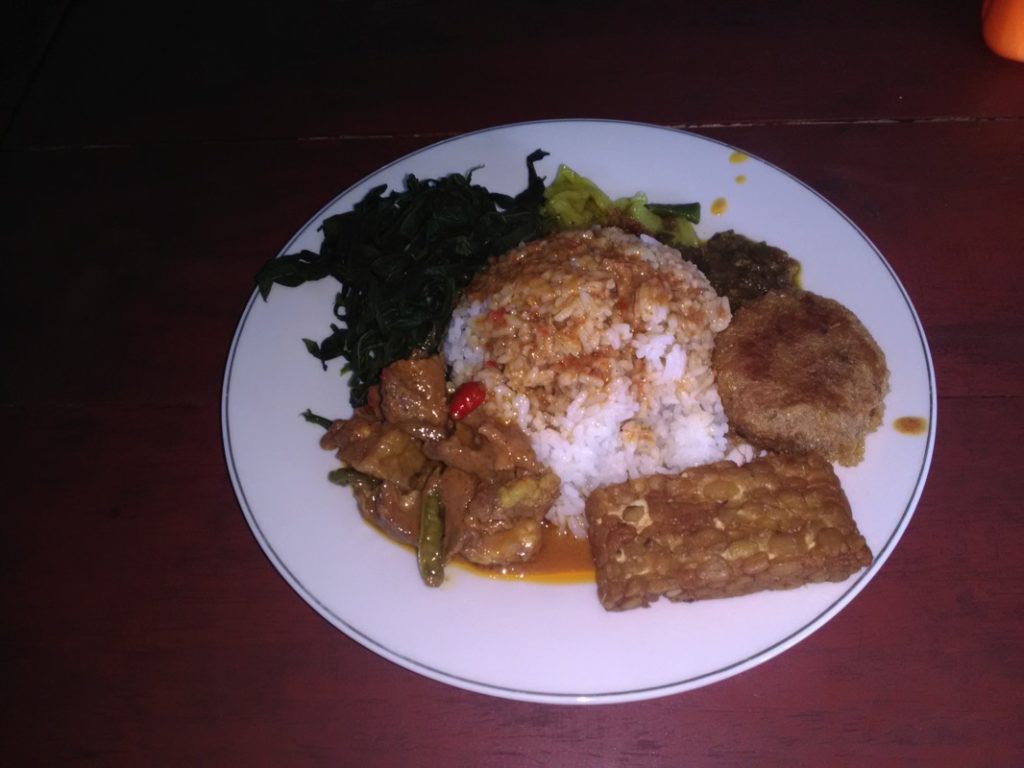
Very often, you will be served automatically some boiled cassava leaves (the dark green vegetables on the picture above) . They are not charged but not very tasty either.
Some personal favorites
Padang food
Padang food (which is more correctly described as Minang food, Minang being the ethnical group of West Sumatra) is arguably the most popular regional cuisine of Indonesia and can be found in any part of the country.
The most famous dishes from this region is rendang sapi ‘beef rendang’ (beef slowly cooked in coconut milk and spices). Actually rendang is a way of cooking and not a dish. Chicken rendang (rendang ayam) also exists for instance. Both taste great.
Another less known dish of the area is dendeng (slice of dried meat served with chili relish).
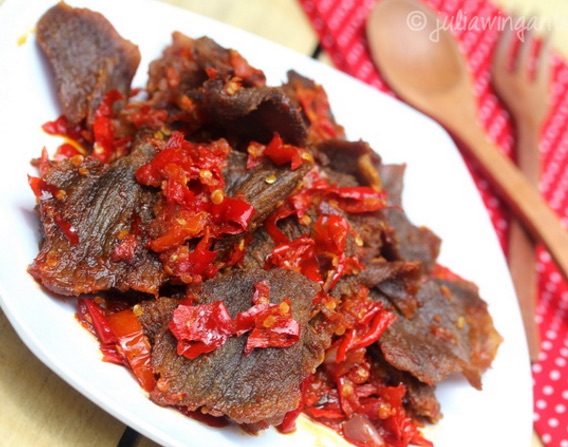
I’m a great fan of jengkol (dogfruit), which is common in all regions of Indonesian but often found in Padang restaurants.
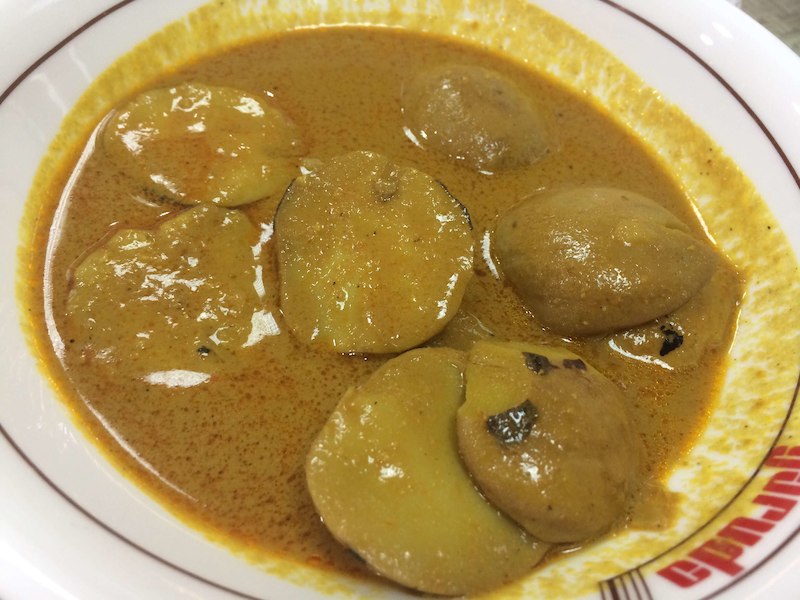
Jengkol 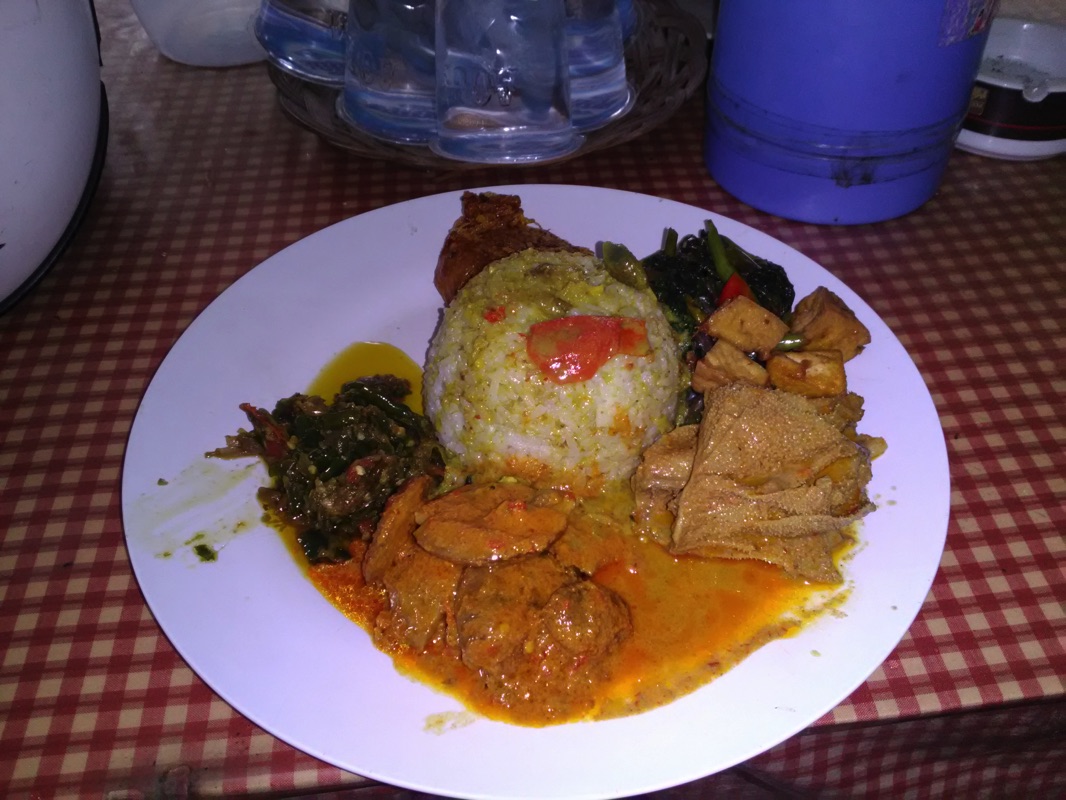
Jengkol with beef tripe (gulai babat sapi)
Another common dish in Padang restaurant is cincang, a kind of fat meat curry.
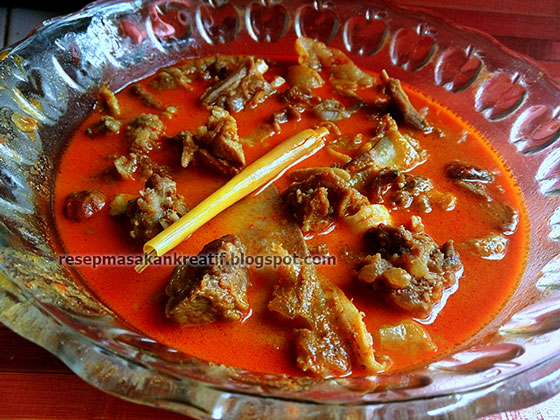
Seafood
Usually found in Manado restaurants, ikan bakar dabu dabu ‘grilled fish with dabu-dabu sambal’ is one my favorite. Dabu-dabu sambal is extremely spicy in Manado, but I’ve already eaten it in Halmahera and they make a less fierce version.
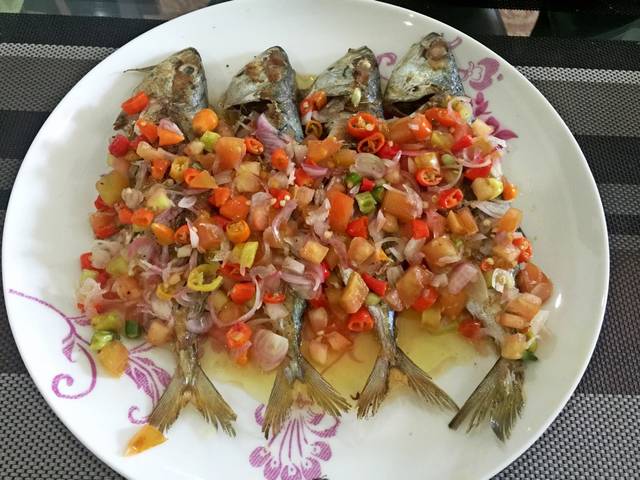
Otherwise, grilled fish is rarely a disappointment :
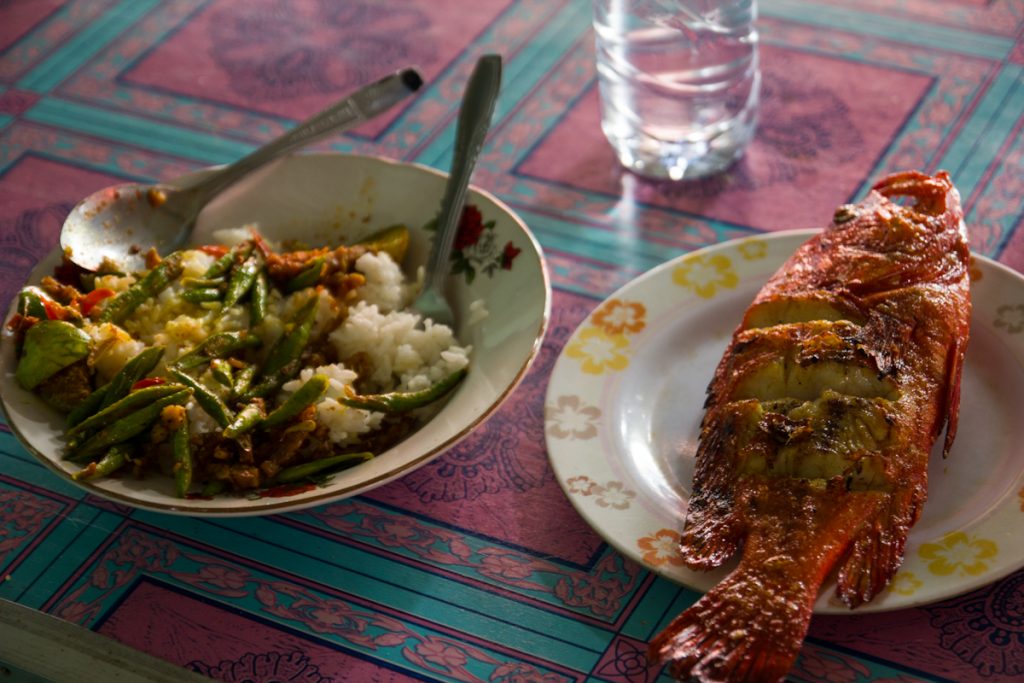
I love to eat clams. My favorite Indonesian recipe is kerang balado (spicy clams) :
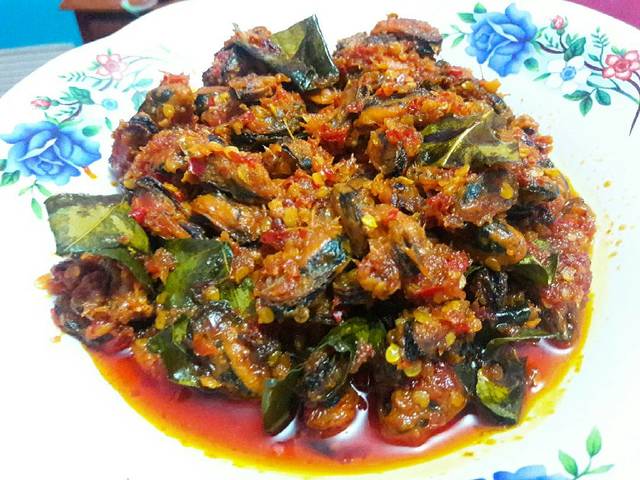
Very simple and so good cumi bakar (grilled squid) :
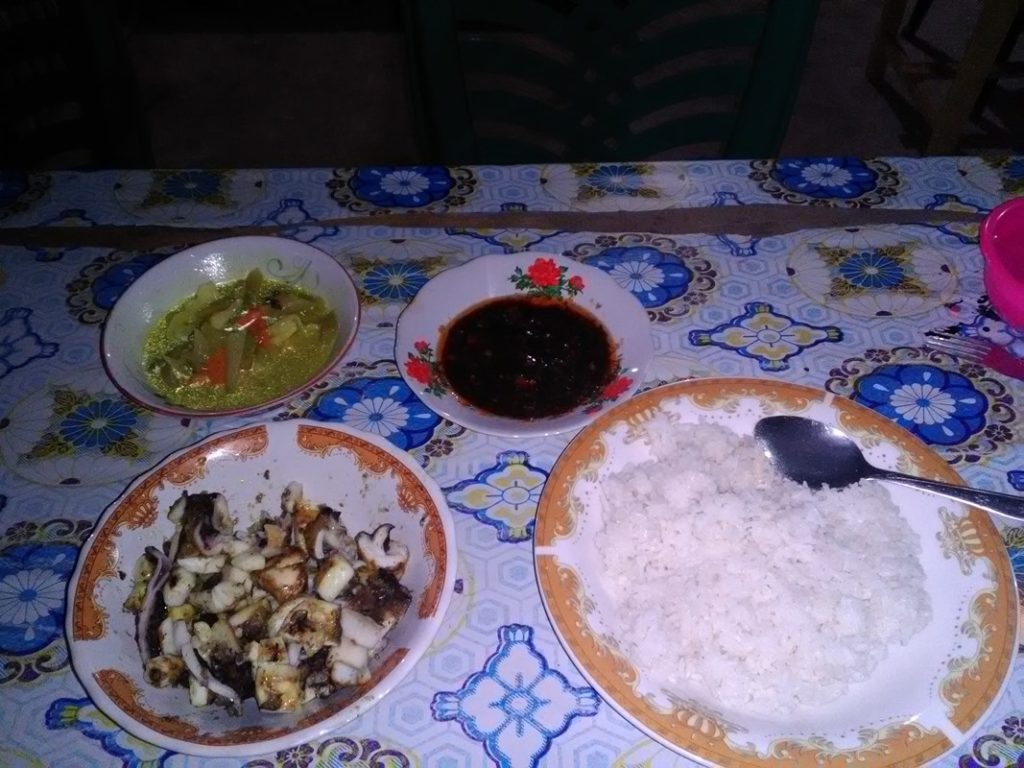
Meat
I love to eat goat dishes in Indonesia. Besides sate kambing (goat skewers) I really recommend to try the goat curry (gulai kambing).
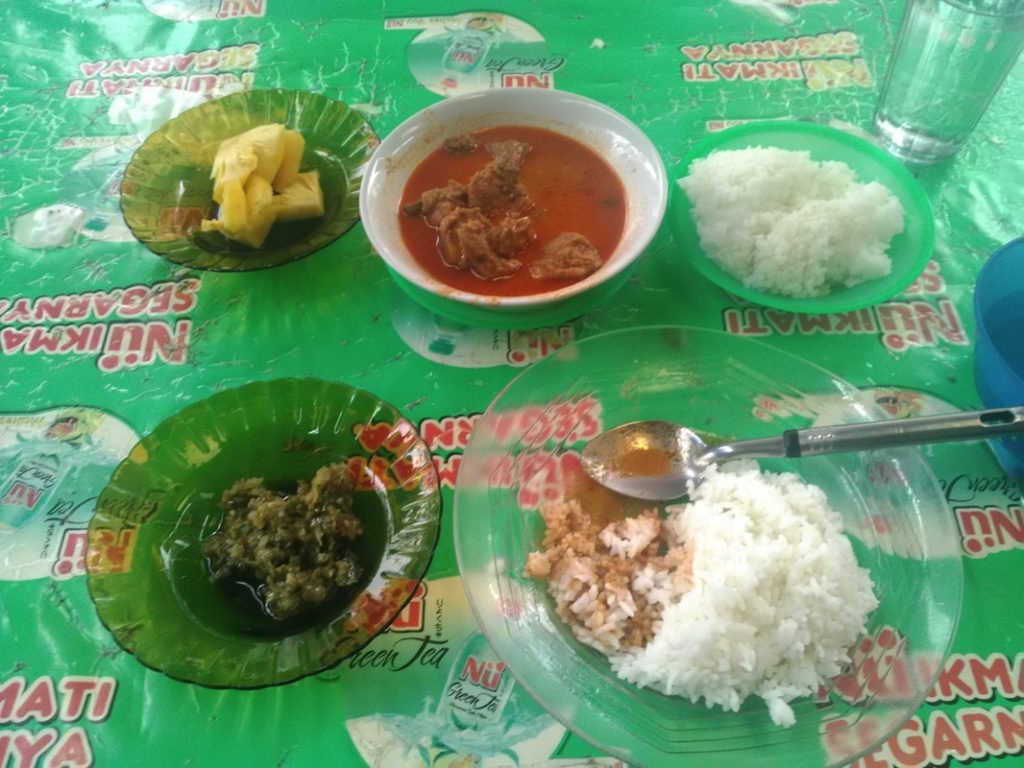
A common way to cook goat in Java is called tongseng (goat can be replaced by other kind of meat but it’s the most common variation):
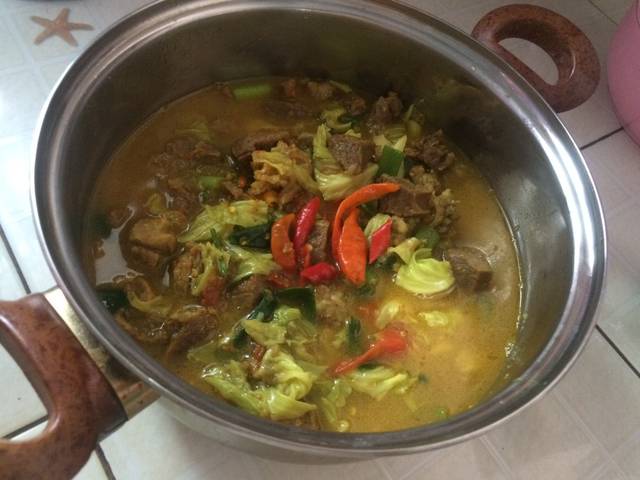
Another great dish (but can be a bit hard to find) : iga bakar (grilled [beef] ribs) :
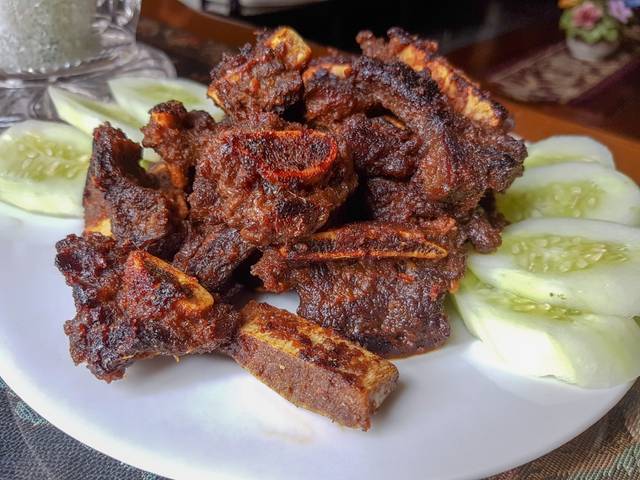
Soup
There is a huge variety of soup, at least any region in Java has its own as well as many other regions outside Java.
If I’d have to pick one, I’ll go for Sop Konro :
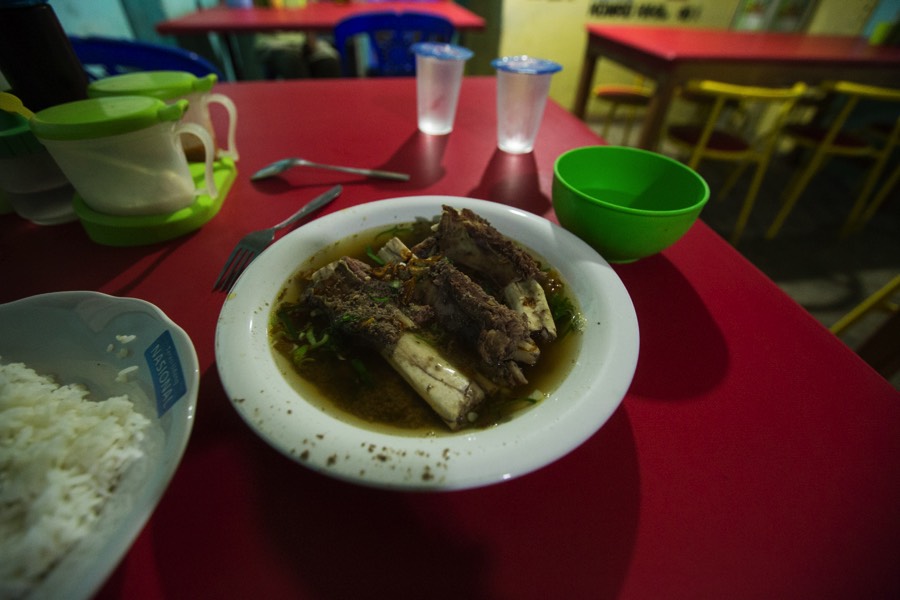
Soto Madura (‘Madura style soup’) is also quite tasty.
A few regional specialties I like
It’s of course impossible to list everything but here is a couple of regional dishes I like. They can be hard to find outside their region :
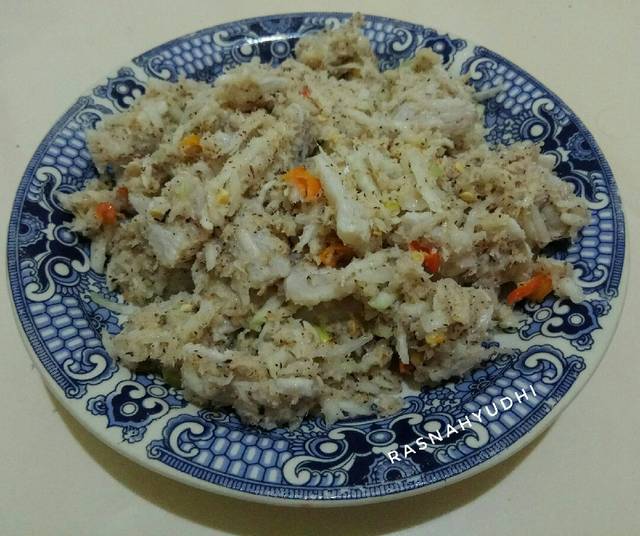
Lawa : a kind of ceviche from South Sulawesi 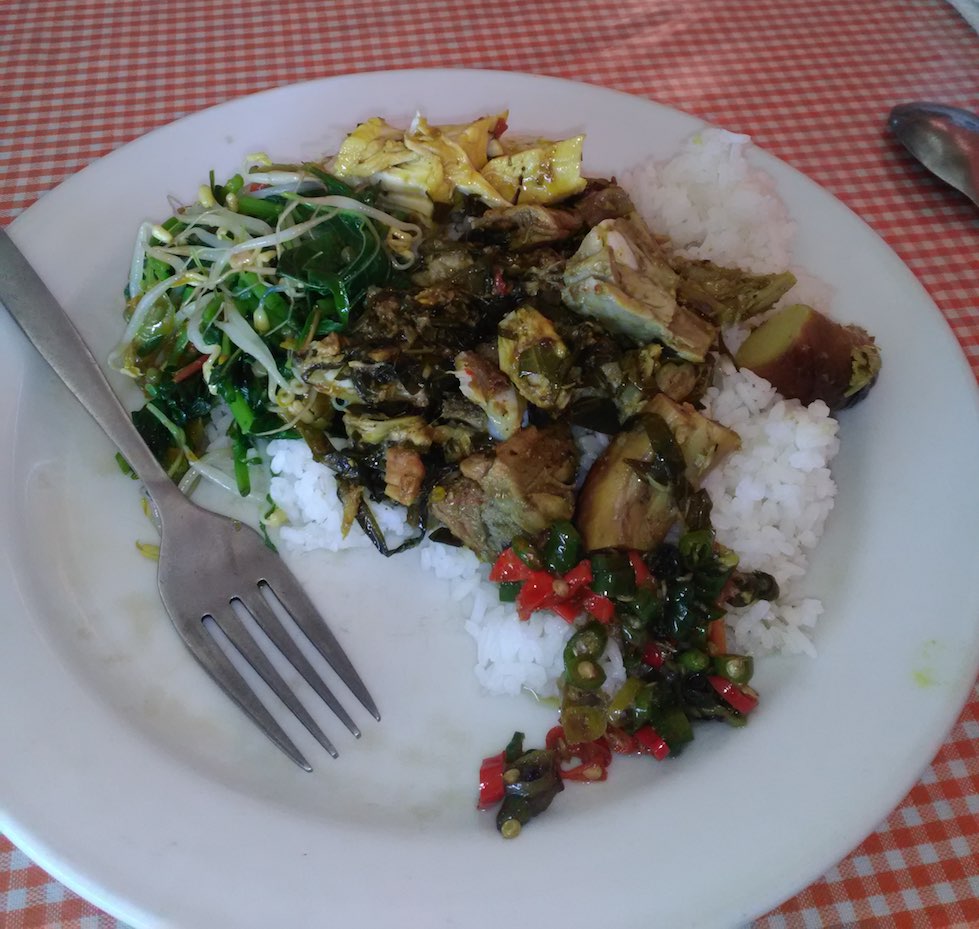
Babi guling (Bali) 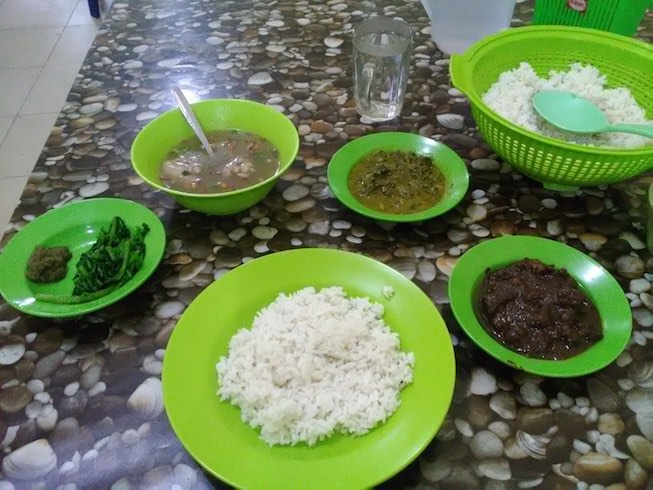
Lomok-lomok (Batak Karo style pork meal)
Eating in people’s house
Indonesian often dissociate makanan kampung (food from the village) from the food found in restaurants. Obviously, it’s going to depend on the wealth of the family but in modest households, meat is rarely on the menu. Dried fish are consumed a lot.
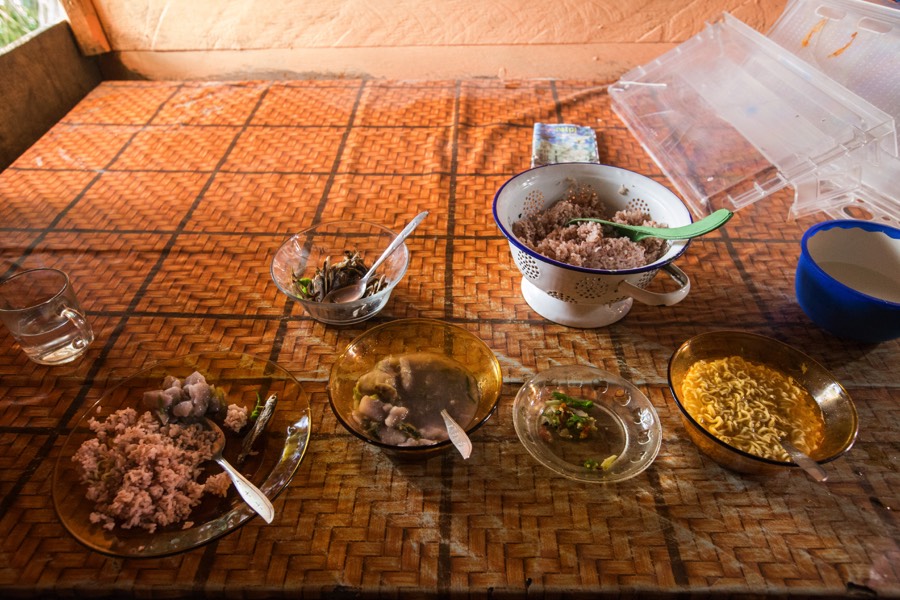
In West Sulawesi : cooked ubi, dried fish and instant noodles 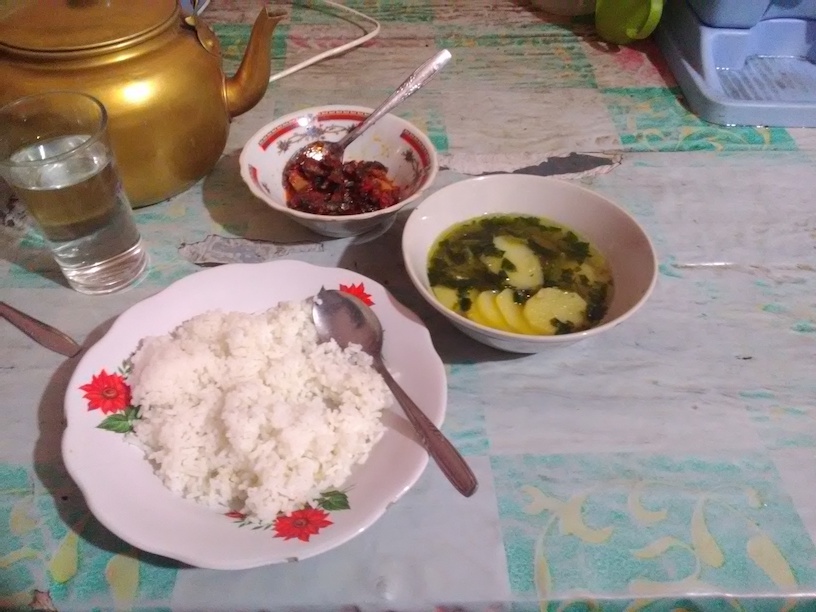
In Jambi : dried fish with chili relish, and a potato soup
It is also common to cook products collected in the nature, for instance in this village of West Kalimantan : rebung (bamboo shots), terong bola (round eggplants from their garden) and other forest vegetables I cannot name were on the menu :
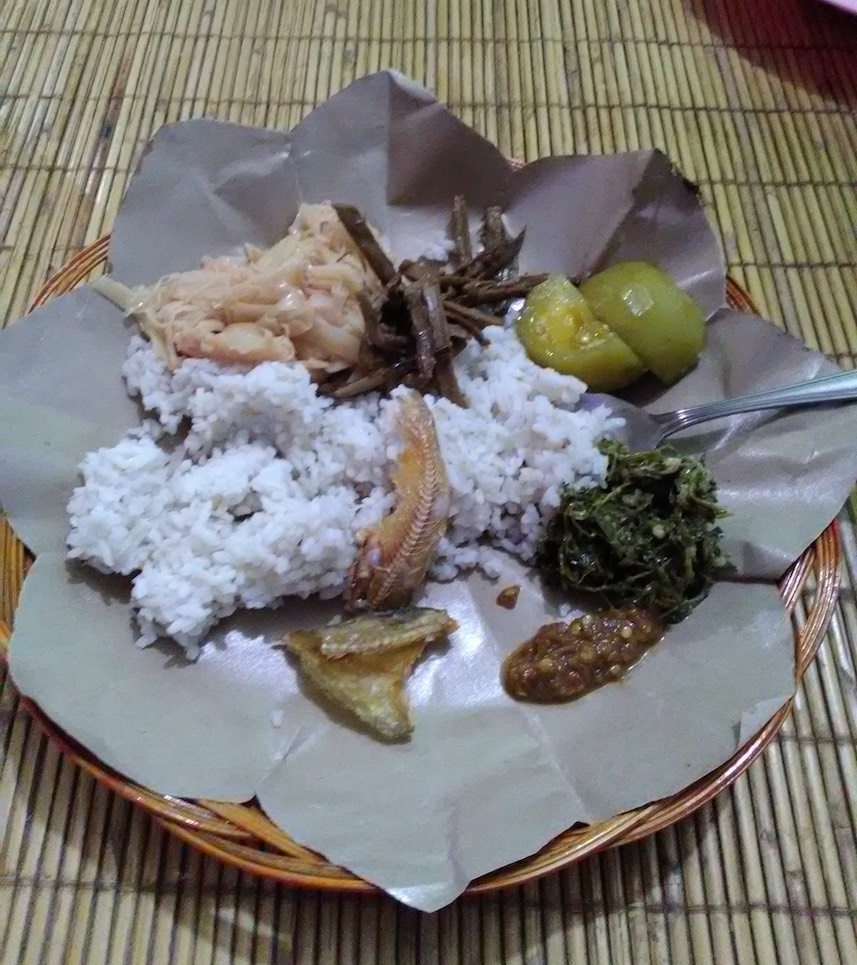
Or this lunch I was invited to share by some youngsters in South-East Sulawesi : freshly hunted lake fishes, boiled kelor leaves and fresh seaweed seasoned with lime and chillies :
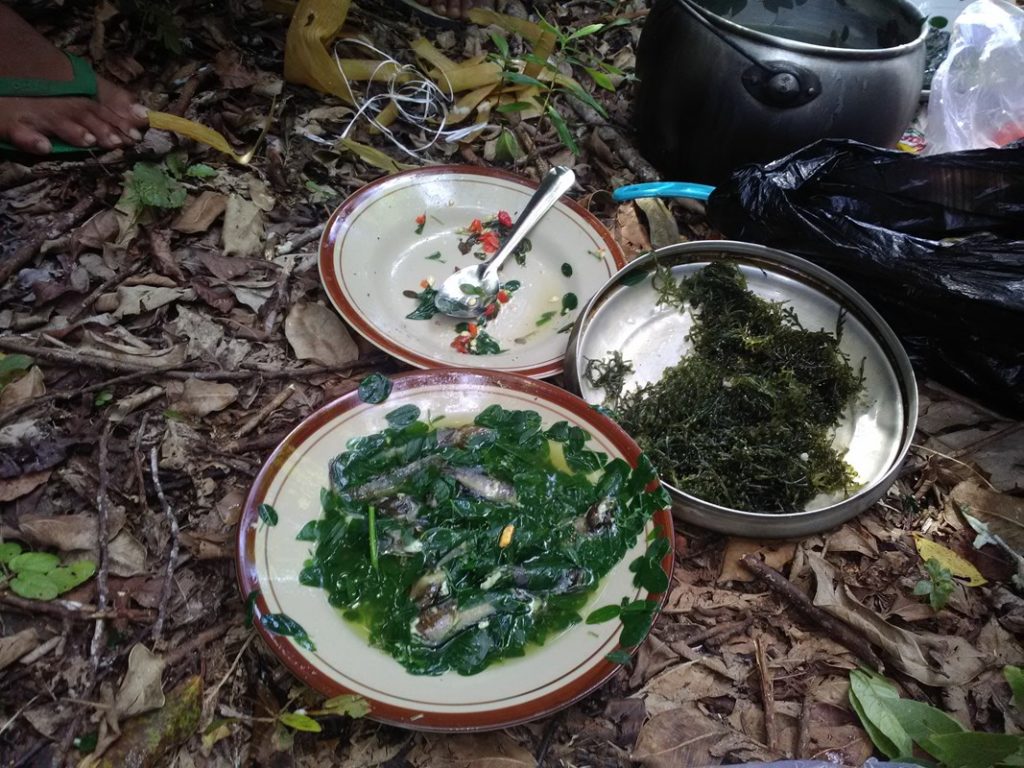
A few tips when eating at local restaurant
Most local restaurants use a fridge only to store beverages. Lots of dishes are cooked in a limited quantity and can sold out quickly depending on the reputation of the restaurant.
Many places are known for one or 2 particular dishes, so they will have plenty of them but a rather limited stocks of the other items on the menu.
So you are likely to often hear the word kosong or habis (‘not available’) at the order.
Restaurants with an English menu tend to charge a 50% to 100% premium on everything. If there is no English menu (quite often there is no menu at all, just look at the front cart) it’s a good sign.
The first plate of rice is almost never charged (unless you eat in a mall or a fancy restaurant in town). Vegetables are charged very little as well as tempeh and eggs.
When asked what do you want to drink you can ask for an es teh (iced tea) or an es jeruk (couple of small limes or oranges squeezed in a glass of fresh water), both should be charged 2’000-5’000Rp in a simple restaurant. It is generally possible to ask for plain water (air putih) which is not charged, even if there is no water jug on the table.
Indonesian eat a lots with their hands. Wash your hand in the bowl of water you are given before and after eating. It is never an issue to ask for a fork (garpu) or a spoon (sendok). I’ve never seen a knife on a simple restaurant table.

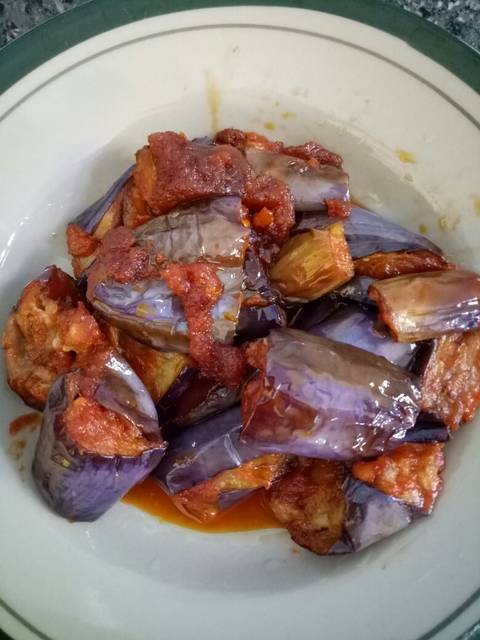
Leave a Reply